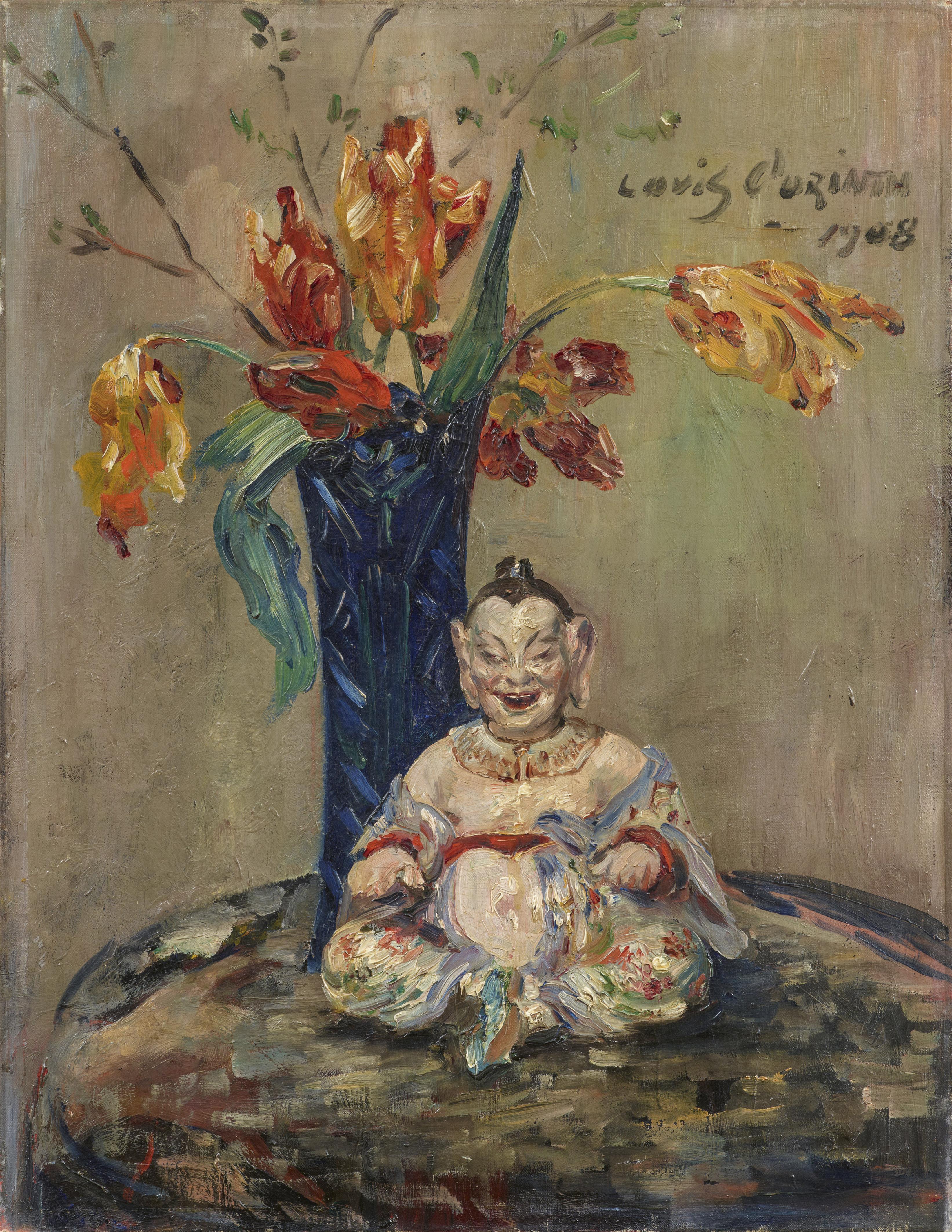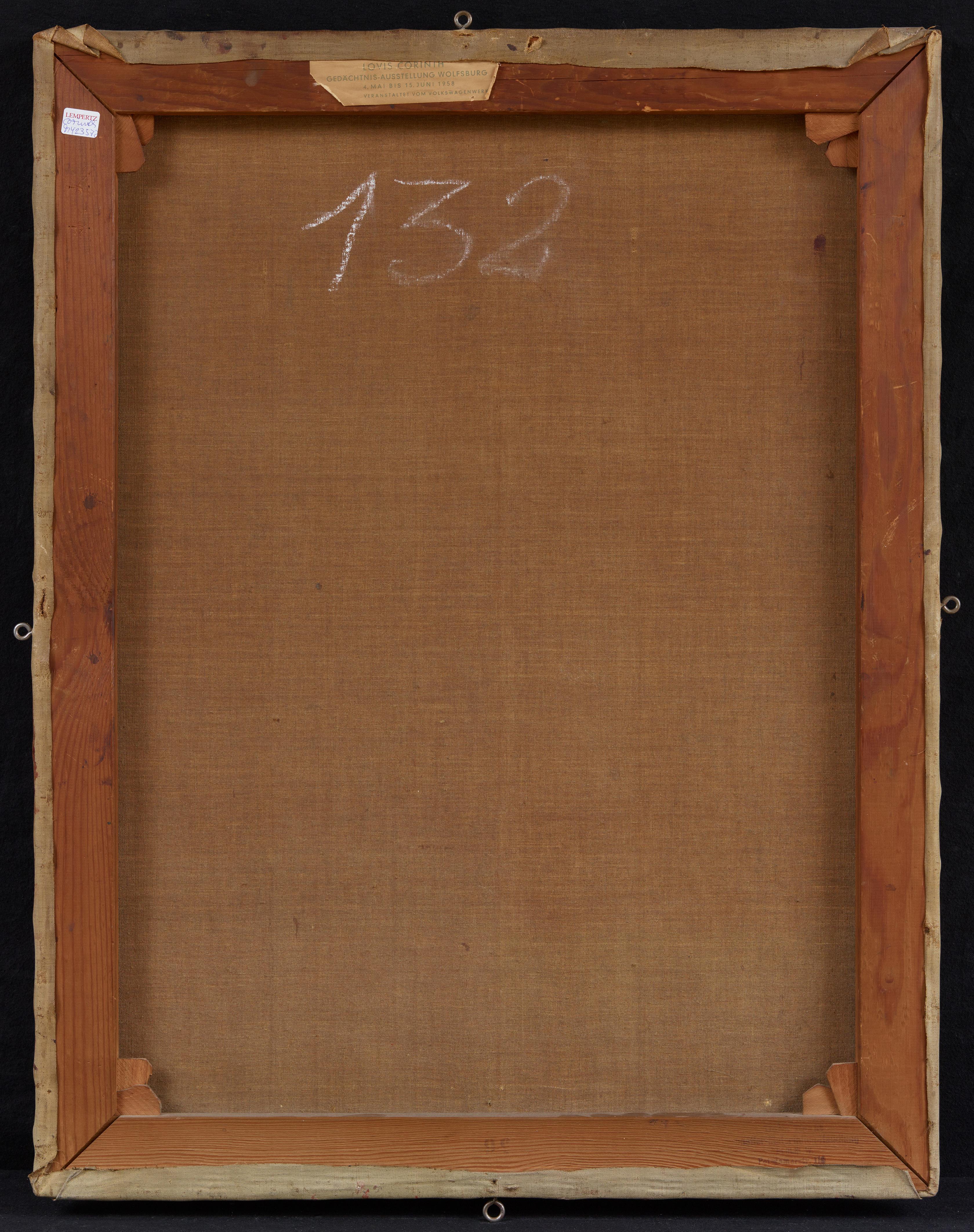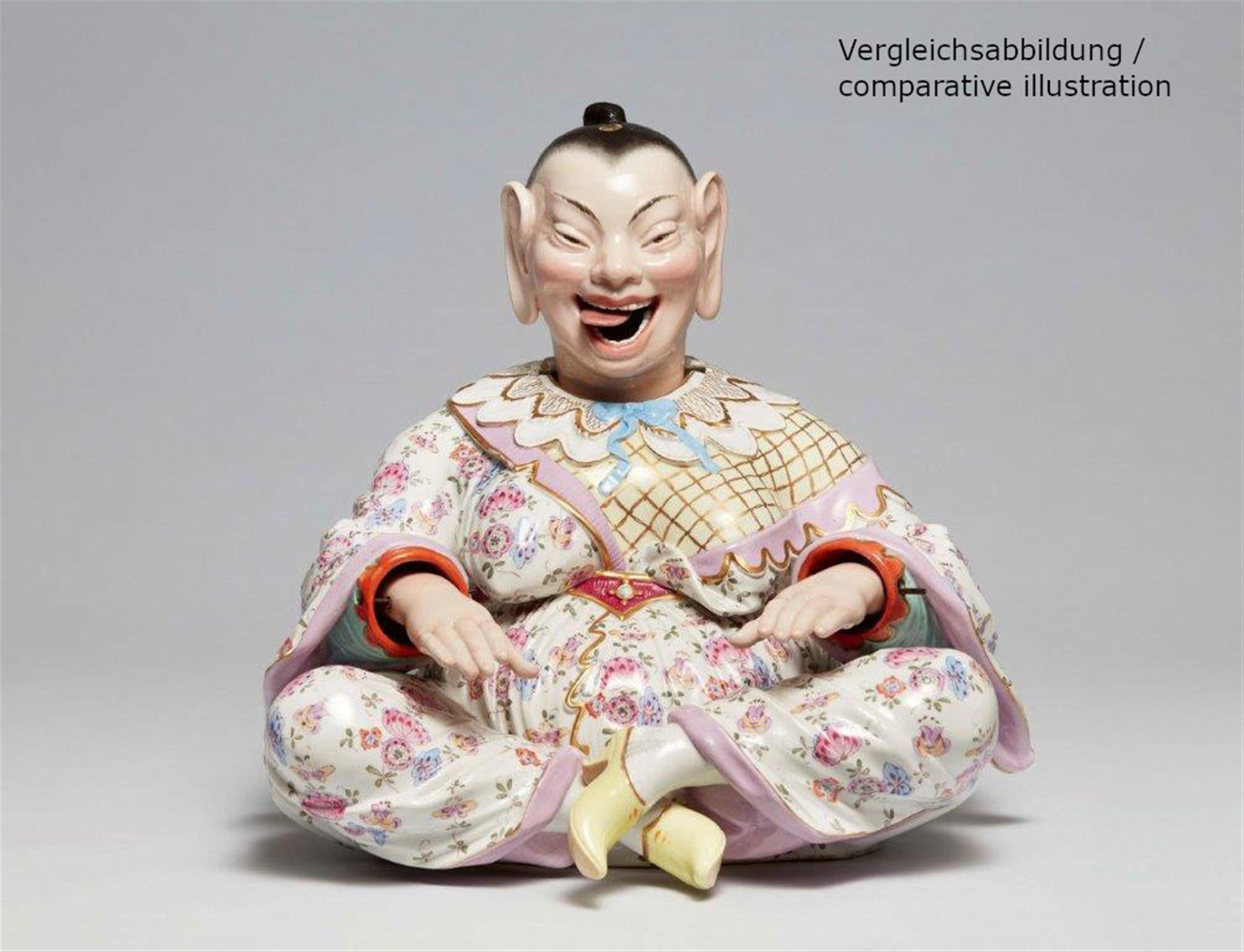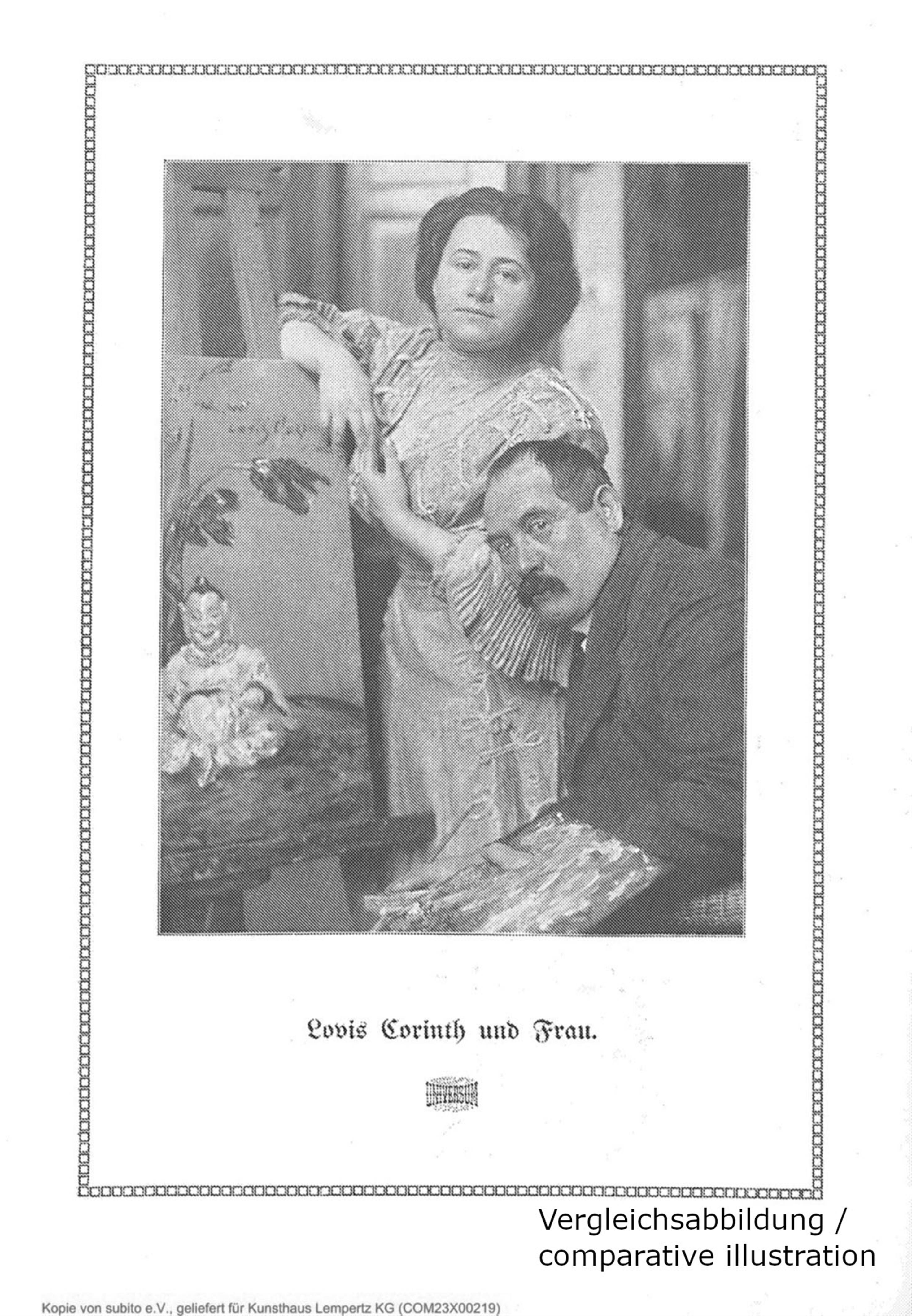Lovis Corinth
Pagode mit Blumen
1908
Oil on canvas. 72.3 x 56 cm. Framed. Signed and dated 'Lovis Corinth 1908' in black upper right. - Minor retouchings of paint loss in margin areas. Colour-fresh condition.
In this early still life, Lovis Corinth leads our gaze towards a dark marbled table on which stands a shimmering blue vase with fully blossomed tulips and a charmingly gleaming pagoda, the porcelain figure of a laughing Buddha. This could be a model from 1730 created by Johann J. Kaendler for the Meißen porcelain manufacturers belonging to Corinth's personal collection, which he used several times as an eye-catcher for his still lifes (see comparative photo). Going far beyond the description of the motifs, the still life asserts itself as a manifesto of colours: the dark blue of the vase, the iridescent red-orange tones of the tulips, the nuances of the light blue and the shimmering white of the porcelain. Like hardly any other genre, the still lifes convey Corinth's conception of painting: in contrast to Cezanne, who tried to reduce all forms to the basic geometric shapes of nature and thus 'built' pictures, it is precisely the still lifes that show Corinth's closeness to the living, constantly changing forms of nature. Flowers - to him - seem to be made for still lifes - "delicate and subtle in the forms of their blossoms and leaves" (Exh. cat. München/Berlin 1996-1997, p. 195).
At the beginning of the century a painting like "Pagoda with Flowers" is rather rare in Corinth's work. At the height of his creative career, he painted primarily historical and mythological subjects as well as portraits of Berlin notables. It was not until he opened the painting school for women that he turned to the old-masterly genre of still life. In his choice of motifs, too, he took his cue from the Old Masters, namely 17th-century Dutch still lifes, which he transferred into a modern, sketchy and colour-soaked style of painting.
Catalogue Raisonné
Berend-Corinth 371
Provenance
Prof. Dr. med. Carl Helbing Berlin; Elisabeth Marie Mercedes Kurzhals; Lempertz, Auction 538, 17 May 1974, Lot 132; private collection Rhineland; private collection California
Literature
Illustriertes Universum-Jahrbuch. Weltrundschau zu Reclams Universum, 1909, ill. n.p.
Exhibitions
Wolfsburg 1958 (Stadthalle), Lovis Corinth - Gedächtnisausstellung. Zur Feier des hundertsten Geburtsjahres (label on upper stretcher), no. 71








